Written by: School of Architecture
Translated by: LIU Danyang
Edited by: William Mosteller
Date: 10-7
The First Dieless Bulging Technology in the Field of Spherical Tank Machining
In the campus of Harbin University of Technology, a spherical sculpture called"knowledge is power" for many years has already become the most familiar "landscape" in the eyes of teachers and students, and has also become a cultural landmark on the campus of Harbin Institute of Technology. Thebulging technology used in this spherical sculpture represents a fundamental change in the manufacturing of spherical tanks over the past 100 years. It is one of the most important technologies in the field of spherical tank manufacturing in the world.It won the 36th Brussels International Expo Eureka gold medal for inventions, the National Technological Invention Award and the National Scientific and Technological Progress Award. The technology was invented by Professor Wang Zhongren.
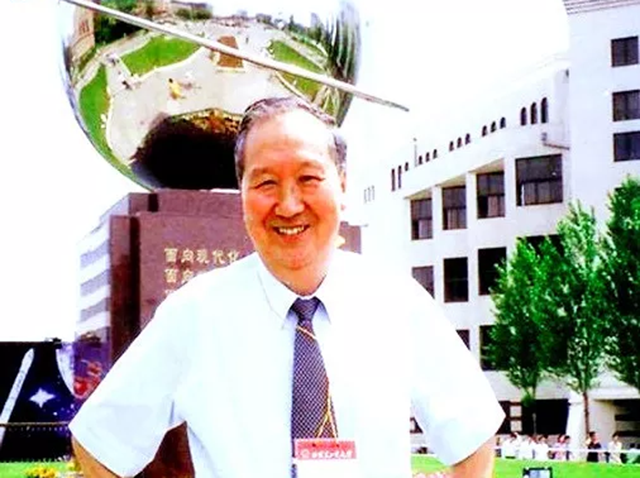
In the first autumn of the 1990s, the Beijing Asian Games torch was burning in the hearts of millions of people. In the 11th Asian Games, a novel and unique artistic sculpture was presented, which was located to the east of the track and field arena of the Beijing Olympic Sports Center. It was a large orange-red steel sculpture 4 meters in diameter and weighing 3 tons. From a distance, it looked like a rising sun, and from a side angle, it looked like an ignited rocket about to take off. The idea was delicate and exquisite, giving people the enjoyment of beauty and adding luster to the Asian Games. This unique andremarkable shape was formed using a new technology that Professor Wang Zhongren invented--the die-free bulging technology.
In the past, the spherical tank was manufactured bymanipulatinga flat plate into a spherical shell plate through a die on a press, and then assembling and welding the spherical shell plate into a spherical tank. Wang Zhongren invented this "spherical container die-free bulging process"that employed internal pressure to make themulti-faceted shell into a sphere, neither using a press, nor using a mold. The spherical storage tank, pressurized water supply tan and spherical water supply tower of liquefied gas, which have been manufactured by this technology,are in good operatingcondition. In addition, this technology was used to makea number of large-scale spherical ornaments, such asQingdao "May Wind",Harbin Museum Square Art Ball and Eureka Ball on the campus of Harbin University of Technology.
International First Integrated Satellite and Arrow Vehicle
"Technology and Application of Quick Boat-Star-Rocket Integrated Vehicle" was selected as a"Top Ten Scientific and Technological Progress of Chinese Universities" in 2014. The result of this project wasthe first realization of the concept and method ofan integrated satellite and rocket design in the world. The "Kuaizhou 1" satellite, which was developed asa result, was successfully launched on September 25, 2013.
This result is an original one, which is supported by the National 863 Plan. Aiming at the urgent need of emergency monitoring and information support for emergency rescue and disaster relief, the core technical problems of rapid development, rapid launch and rapid application of spacecraft were solved, the first successful maneuvering launch satellite of China's solid launch vehicle was realized, and the fastest image recording of China's remote sensing satellite was set up. The overall indicators of the project were top in China and advanced in the world, opening up a new way for China to respond quickly to the development of space technology and achieving significant economic and social benefits.
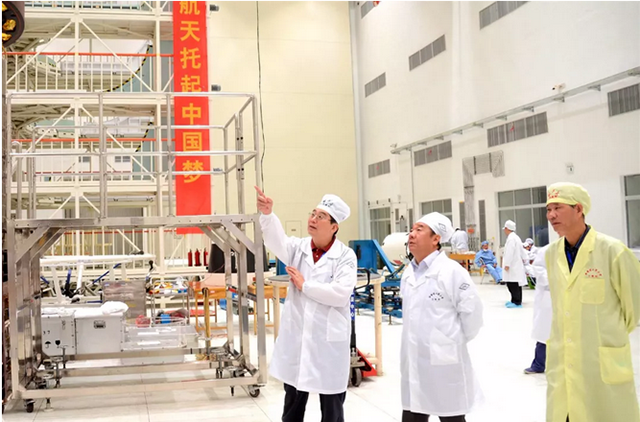
After the Avalan earthquake in Pakistan, the Hualien earthquake in Taiwan, the Yutian earthquake in Xinjiang, the forest fire in Mianning County in Sichuan, the Honiara flood, the missing Malaysia Airlines flight MH370, and the ice-breaking support of the Chinese research vessel Xuelong, the Kuaizhou 1 carried out timely disaster monitoring and quickly obtained disaster information.
As the first satellite with rapid response capability in China, Kuaizhou-1 has also been applied to real-time monitoring of engineering construction, land use, mining, hydrology,and environment, providing high-quality remote sensing images to 61 user units in 19 provinces.
Global First Reflector Structure System
On September 25, 2016, the 500-meter spherical radio telescope (FAST), known as the Super Eye of Heaven, was inaugurated in a karst pit in Pingtang County, Guizhou Province. Theoretically, the Eye can receive electromagnetic signals 13.7 billion light-years away, a distance close to the edge of the universe. The reason why China's "Eye of Heaven" can see so far and so precisely is that one of the world's first technologies, the Active Reflector Structure System (ARSS), was undertaken and completed by researchers at Harbin Institute of Technology.
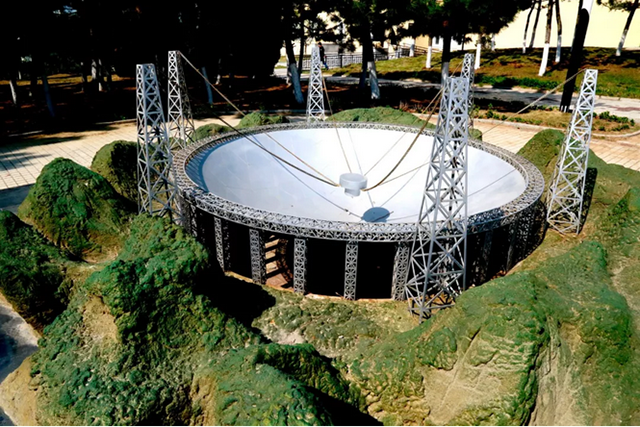
The "Eye of Heaven", built under the auspices of the National Astronomical Observatory of the Chinese Academy of Sciences, took 22 years to complete, from concept to site selection. It is the world's largest single-caliber and most sensitive radio telescope with independent intellectual property rights. The FAST project consists of active reflector system, feed support system, measurement and control system, receiver and terminal, observation base and so on. Academician SHEN Shizhao, Professor FAN Feng and Professor QIAN Hongliang of the Space Structure Research Center of Harbin Institute of Technology led the research team. Since 2003, they have participated in the pre-research, feasibility study and preliminary design of the structural system of the FAST project. The proposed active reflector structure scheme and several key technologies have been successfully applied to the FAST project, providing strong technical support and guarantee for the national project establishment and commissioning of the Super Eye of Heaven.
In 2010, the National Astronomical Observatory of the Chinese Academy of Sciences named the asteroid discovered on June 7, 1996 "Harbin Institute of Technology Star" because of the outstanding contribution made by Harbin Institute of Technology in the FAST project. Harbin Institute of Technology has become one of the few universities in the country to be honored with the naming of an asteroid. Academician Shen Shizhao, Professor Fan Feng and Professor Qian Hongliang witnessed the historic moment on the day of the completion of "Eye of Heaven".
First International Man-Machine Collaborative On-Orbit Maintenance Test
On the afternoon of November 9, 2016, Xi Jinping, General Secretary of the CPC Central Committee, President of the People's Republic of China, and Chairman of the Central Military Commission, visited the China Manned Space Engineering Command Center to watch the man-machine collaborative on-orbit maintenance scientific experiment of the Tiangong-2 astronaut and the space manipulator. In the television picture, the hand-controlled robot arm reached a predetermined position, the manipulator moved, the manipulator was reset, the data glove state was restored, and the astronaut accurately completed a series of test actions.
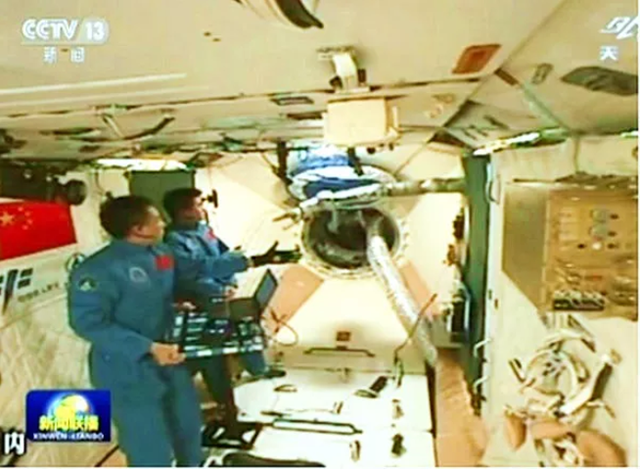
The test of the man-machine cooperative on-orbit maintenance technology was the first time in the world such a test had been performed, which was jointly completed by Harbin Institute of Technology, the Fifth Research Institute of China Aerospace Science and Technology Corporation, and Beijing Institute of Technology. This experiment was mainly aimed at the assembly and disassembly of space equipment in orbit, exploring the cooperation between man and machine to complete the typical tasks of on-orbit maintenance, and accumulating experience for the on-orbit service of space robots.
TheTiangong 2 Space Manipulator was developed by Harbin Institute of Technology, including amulti-sensory flexible manipulator, afive-finger humanoid dexterous hand, acontroller and its software, ahand-eye camera, human-computer interaction equipment and its software. In the three-year development cycle, the development team completed the product development, ground operation test, space environment adaptation test and so on. On September 15,2016, the space manipulator was launched into orbit with Tiangong-2. On October 19, 2016, after docking with Shenzhou 11, the astronauts and manipulators collaborated to complete scientific experiments such as screwing with power tools, removing heat insulation materials, and telecontrol in orbit. The man-machine cooperative on-orbit maintenance test was one of the three key test tasks of Tiangong-2. The astronauts were trained for 10 days on the ground and 80 hours in orbit. As of November 13, 2016, all the test tasks have been successfully completed. The man-machine cooperative on-orbit maintenance technology will provide an important guarantee for the efficient and safe operation of China's space station.
First Application of New Generation Magnetically Focused Hall Electric Thruster
On January 3, 2016, China's new generation of magnetically focused Hall electric thruster HEP-100MF, jointly developed by Professor Yu Daren of theEnergy College of Harbin Institute of Technology, theInstitute of Special Ceramics of theSchool of Materials, and the 502 Institute of Aerospace Sciences, was used on the Shijian-17 satellite, which was successfully launched from the Wenchang Satellite Launch Center in Hainan by a Long March 5 carrier rocket. OnNovember 22, the thruster was successfully ignited in geosynchronous orbit, marking the first international space application of a magnetically focused Hall electric thruster.
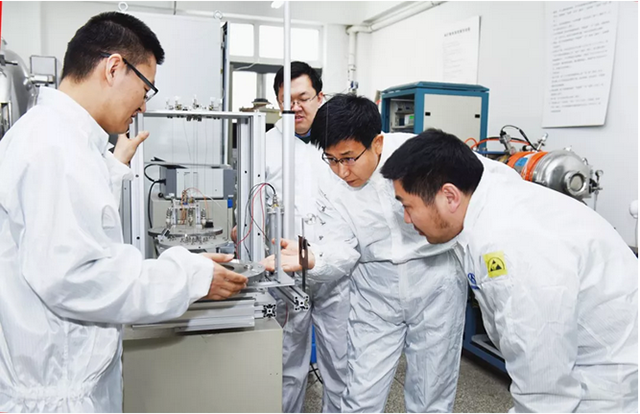
Professor Yu Daren's team aimed at improvingthe large divergence angle of the traditional Hall thruster jet, particularly the beam bombardment on the wall whichreduces the life, specific impulseand efficiency of the thruster. Supported by the National Fund for Distinguished Young Scholars and the National Natural Science Foundation of China, plasma flow control and magnetic focusing methods were studied. The key technologies ofa hall thruster, such as wide-range magnetic focusing technology, thermo-electromagnetic coupling design technology, low-frequency oscillation control technology, low-power and high-reliability hollow cathode, sputtering-resistant boron nitride special ceramics and so on, have been successively broken through. The small plume divergence angle high resulting in highperformance reliability and stable discharge of the space flight prototype was realized. The plume divergence half angle was 15 °, ranking first in the world. The specific impulse is 20% higher than that of the international SPT100, which greatly reduced the fuel consumption of the thrusters and the influence of the plume on thespacecraft, and provided a new generation of Hall electric thrust technology with independent intellectual property rights for the new generation of long-life space platforms in China. It can be widely used in the fields of space station, deep space exploration, orbit control of high-low orbit earth satellites and so on.
World's Largest Human Genome Project Launched
On December 28, 2017, China launched the "China 100,000 Human Genome Project", the first major national project in the field of human genome research in China and the largest human genome project in the world.
In addition to the Han nationality, nine other ethnic minorities, including the Zhuang and Hui nationalities, with a population of more than 5 million, will be selected for the 100,000-person genome project, which will cover major areas of China. Scientists hope to study the relationship between disease and genetic inheritance by mapping the fine genome of the Chinese people.
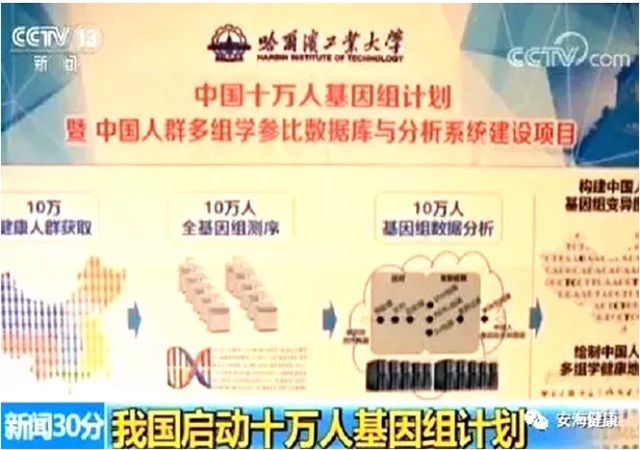
Gene is a piece of DNA with genetic effect. Human birth, aging, diseaseand death are all related to genes. There are about 25,000 human genes, andthe purpose of genome research is to unlock the code of these 25,000 genes in the human body, thus deciphering the human genetic information and mapping the genes of our nation.
Professor Wang Yadong, chief scientist of the project, said the main goal is to study how Chinese people transform from healthy to diseased and provide reference for medical research or clinical diagnosis and treatment of diseases in China. According to the plan, the whole project will complete all the sequencing and analysis tasks within four years, which will be the fastest-moving genome project in the world.
The First High-speed Laser Communication Experiment of High-orbit Satellite to Ground
On January 23, 2018, it was learned from the National Defense Bureau of Science, Technology,and Industry and the National Space Administration that China's new generation of high-orbit technology test satellite, Shijian-13, successfully carried out the first international high-speed laser two-way communication experiment between thehigh-orbit satellite and theground. The experiment was conducted by a satellite laser communication team led by Ma Jing and Tan Liying of Harbin Institute of Technology. The team has made many technical breakthroughs and solved many international problems.
China's high-speed information transmission in space, a cutting-edge field of space technology, has set a solid foundation for the implementation of the country's major scientific and technological projects to integrate space and information network, according to a press release issued here today by the Ministry of Space Science and Technology (MOFTEC).
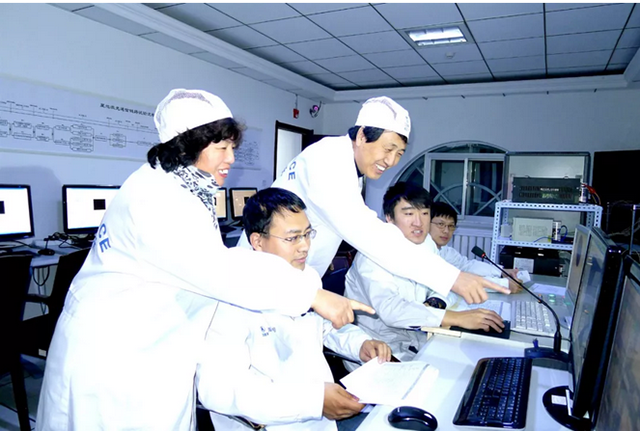
Satellite laser communication has the advantages of large communication capacity, long transmission distance, good confidentiality and so on. It is an irreplaceable means of building a space information superhighway, and is also the cutting-edge science and technology in the current international information field. High-orbit satellite-to-ground laser communication technology, which is very difficult to develop, is an especially hot topic in the world.
Relevant officials of the State Administration of Defense Science, Technology, and Industry said: The leapfrogging development of innovation in satellite laser communications is a model of independent innovation in China's space science and technology. TheHIT project team has adhered to independent innovation, and five generations of laser communication terminals have been developed for different orbiting satellites. The laser communication terminals have made great strides since their creations: from large to small, from heavy to light and from low orbit to high orbit. The experimental systems of high orbit, low orbit and ground laser communication have been constructed, which provide technical support for the relay and transmission of ultra-large capacity and high resolution ground observation data.
VLV Fuel Tank Bottom Trial-produced Successfully
On November 18, 2018, Professor Yuan Shijian's team put forward a new generation of hydroforming technology to overcome the international problem of wrinkling and cracking defects in the process of forming the ultra-large and ultra-thin curved surface monolithic structure. For the first time in the world, the thin-walled monolithic bottom ofa fuel tank with a diameter of 3m was directly formed.
According to reports, the bottom of the fuel tank was praised as the "crown" of the rocket. The fuel tank is the main structure of a launch vehicle, which arecomposed of barrel, fork ring and the bottom of the tank. However, the bottom of the tank is subjected to complicated forces, whichis the key component affecting the reliability of the whole rocket. The new technology of two-way controllable pressurized fluid hydroforming put forward by Professor Yuan Shijian's team solves the problem of wrinkling and fracture of deep-cavity curved surface parts, and breaks through the limit of the existing formingtechnology.
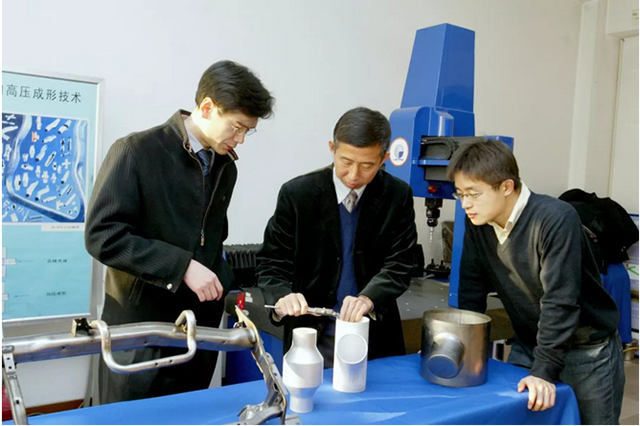
In order to realize the application of this technology in industry, the ultra-large sheet metal hydroforming machine was developed independently by the Institute of Hydroforming Technology of Harbin Institute of Technology, in association with the School of Aerospace and other departments. The sheet hydroforming machine is the largest sheet hydroforming machine in the world at present, andthe forming force and the volume of high pressure liquid are 1.5 times and 10 times of the same kind of equipment previously used. The team used parallel synchronous control technology ofamulti-channel supercharger to solve the problem of superlarge volume and high pressure liquid supercharging and regulation.
Prior to that, in the development of the Long March 7 launch vehicle, the institute adopted the hydroforming technology with independent intellectual property rights, and for the first time in the world, developed five-way parts with integral structure, which greatly improved the reliability of the cryogenic fuel pressurization and transportation system and played an irreplaceable role in upgrading the Chinese launch vehicle.
The First Micro-spacecraft to be Launched intoLunar Orbit
On May 21, 2018, the "Longjiang 2" lunar orbiting satellite was launched withtheChang 'e-4 relay satellite on board, and successfully entered lunar orbit at 2200 hours on May 25, 2018, becoming the first microsatellite in the world to independently complete the earth-moon transfer, near-moon brakingand lunar orbiting. With this success,Harbin Institute of Technology became the first university in the world to put a micro-spacecraft into lunar orbit.
"Longjiang II" weighs only 47 kilograms and has a design life of one year. It was operating in orbit for 437 days, successfully fulfilling its mission objectives. At 2220 hours onJuly 31, 2019, under the careful control of ground flight controllers, the lunar orbiting ultra-long wave astronomical observation microsatellite Longjiang II collided with the Moon in a controlled manner in a predetermined area on the back of the Moon as planned. The successful implementation of the project has explored a new mode of low-cost deep space exploration.

The "Longjiang II" has not only completed its technical tests and exploration tasks, but also greatly promoted international exchanges among people of different nations. Before the satellite was launched, the research team of HarbinInstitute of Technology not only completed the preparation work of four ground stations in China, but also participated in data reception with more than 40 UV ground stations around the world, including Wakayama University in Japan and the 25-meter radio telescope in Devenglo, the Netherlands. In February 2019, the "Most Beautiful Earth-Moon Group Photo" taken by the Chinese team with partners in the Netherlands and Germany was published in the British newspaper Independence and the US Science, which attracted wide attention.
First Analysis of the Structure of T Cell Receptor-Co-Receptor Complex
On Aug. 28, 2019, Professor Huang Zhiwei's team of the School of Life of our university published an online research article entitled "Structural basis of assembly of the human TCR-CD3 complex" in Nature. The high-resolution cryoelectron microscopic structure of thehuman T cell receptor-co-receptor (TCR-CD3) complex containing all 8 subunits was first analyzed. By analyzing the structure, the molecular mechanism of the TCR and CD3 subunits’ recognizing and assembling energy complexes in the outer and inner membranes wasrevealed, which answeredthe basic scientific questions about the structure of theT cell receptor in the field of immunology. It is of great scientific significance to analyze the molecular mechanism of T cell activation, and also provides the key structural basis for the development of immunotherapy based on T cell receptors.
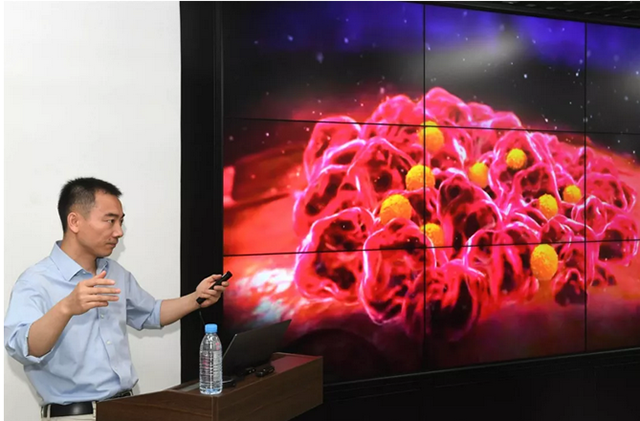
"This work represents an important milestone in the study of the molecular mechanism of cellular adaptive immunity. By elucidating the structure of the first T cell receptor assembled on the membrane and its CD3 co-receptor, we have greatly enhanced our understanding of the activation mechanism of T cell antigen recognition responses," the reviewers said.


